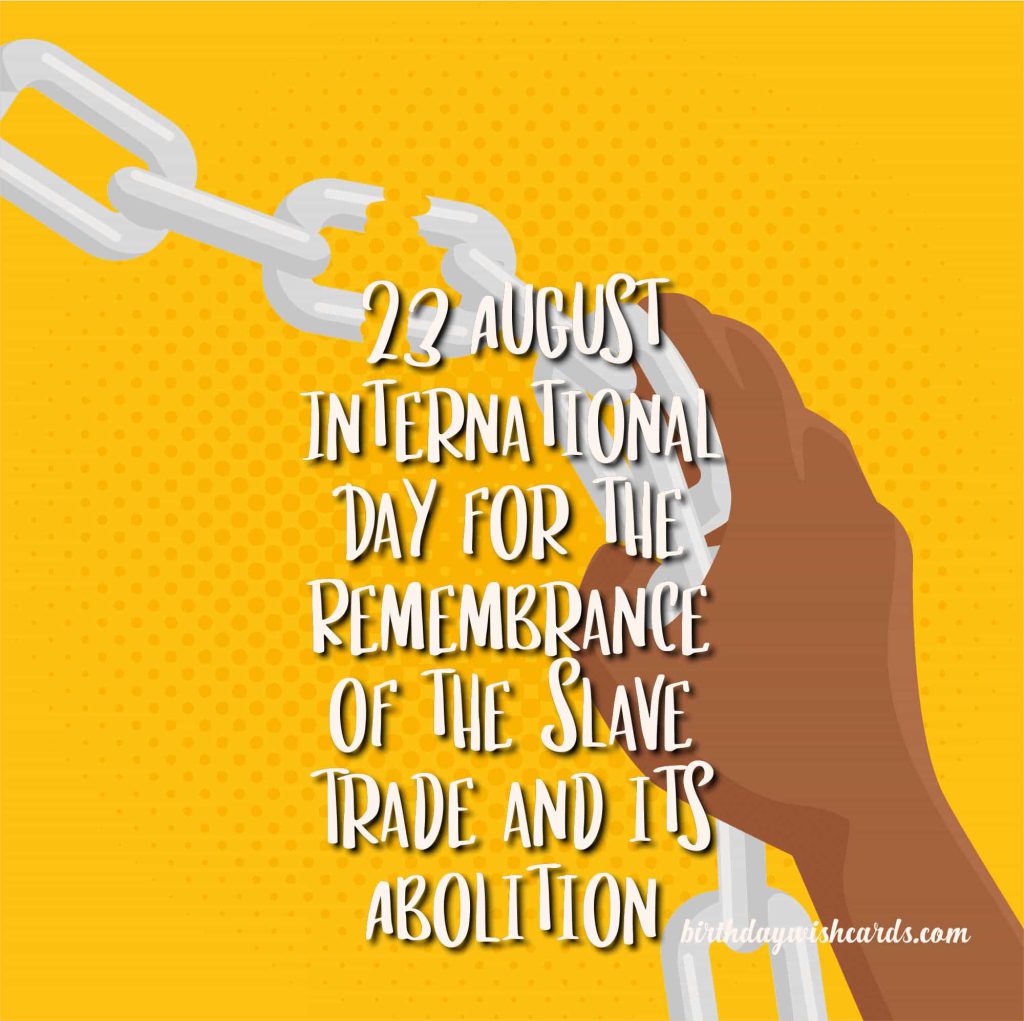
23 August: International Day for the Remembrance of the Slave Trade and its Abolition
When Was the International Day for the Remembrance of the Slave Trade and its Abolition Declared?
The International Day for the Remembrance of the Slave Trade and its Abolition is observed each year on 23 August. This date commemorates the night of 22 to 23 August 1791, when a major uprising began in Santo Domingo—present-day Haiti and the Dominican Republic. This revolt was a turning point in the struggle against the transatlantic slave trade and ultimately contributed to its abolition.
The Santo Domingo uprising marked a pivotal moment in history, challenging the brutal institution of slavery and inspiring movements for freedom and human rights. In recognition of its significance, the United Nations Educational, Scientific and Cultural Organization (UNESCO) established this day to honor the victims of the slave trade and to celebrate its abolition.
Purpose of the International Day for the Remembrance of the Slave Trade and its Abolition
This day serves as a solemn reminder of the tragedy of the transatlantic slave trade, ensuring its memory is preserved worldwide. Through UNESCO’s intercultural project The Slave Route, it provides an opportunity for collective reflection on the historical causes, methods, and consequences of slavery and the slave trade.
The commemoration encourages a deeper understanding of the complex interactions between Africa, Europe, the Americas, and the Caribbean that arose from the slave trade. Its aim is to foster intercultural dialogue and mutual understanding among nations shaped by this shared history.
Each year, UNESCO’s Director-General invites Ministers of Culture from all member states to organize activities on 23 August. These events are designed to involve the entire population—especially youth, educators, artists, and intellectuals—so that the lessons from this dark chapter in history are never forgotten.
How Is the International Day Celebrated?
The International Day for the Remembrance of the Slave Trade and its Abolition has been observed in many countries since its inception. Notably, the first celebrations took place in Haiti on 23 August 1998 and on Gorée Island, Senegal, on 23 August 1999—both locations deeply linked to the history of the slave trade.
Commemorations often include cultural events, educational debates, exhibitions, and workshops that explore the history and legacy of slavery. For example, in 2001, the Mulhouse Textile Museum in France held a workshop on “Indiennes de Traite,” a type of calico fabric used as currency in the slave trade during the 17th and 18th centuries.
In addition, UNESCO’s Director-General issued Circular CL/3494 on 29 July 1998, formally inviting all member states to organize annual commemorative events on 23 August. These initiatives help keep the memory of the slave trade alive and raise awareness of its enduring impact worldwide.
Message from Audrey Azoulay, UNESCO Director-General
“On 23 August this year, we honour the memory of the men and women who, in Saint-Domingue in 1791, revolted and paved the way for the end of slavery and dehumanization. We honour their memory and that of all the other victims of the slave trade and slavery, for whom they stand. Once and for all, it is time to abolish human exploitation and to recognize the equal and unconditional dignity of each and every individual on Earth. Today, let us remember the victims and freedom fighters of the past so that they may inspire future generations to build just societies.”
Visual Tributes Commemorating the Day

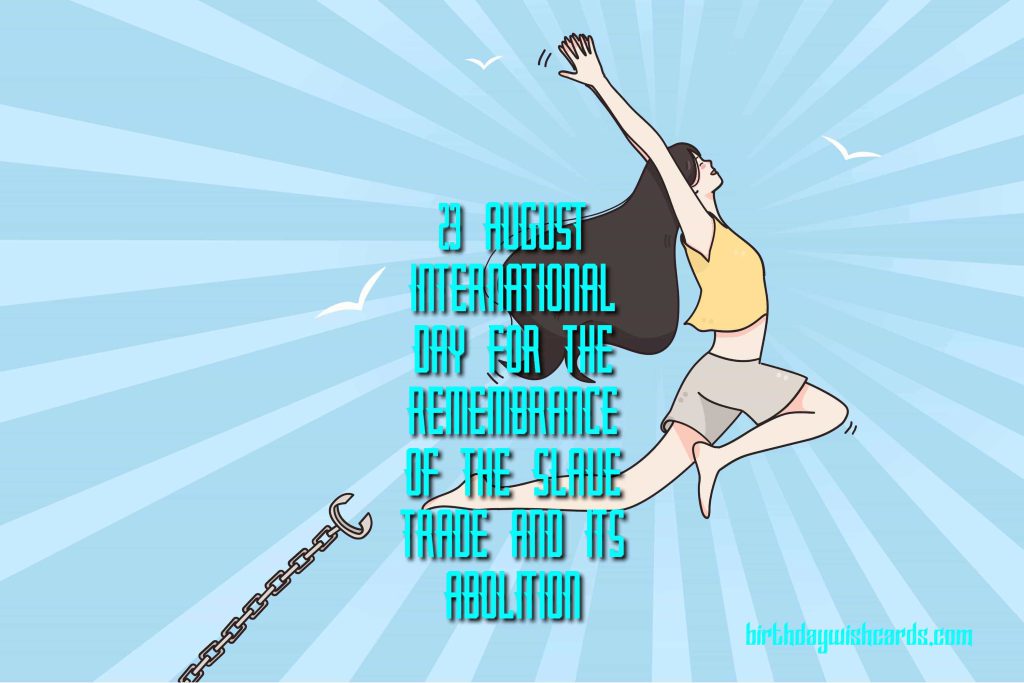
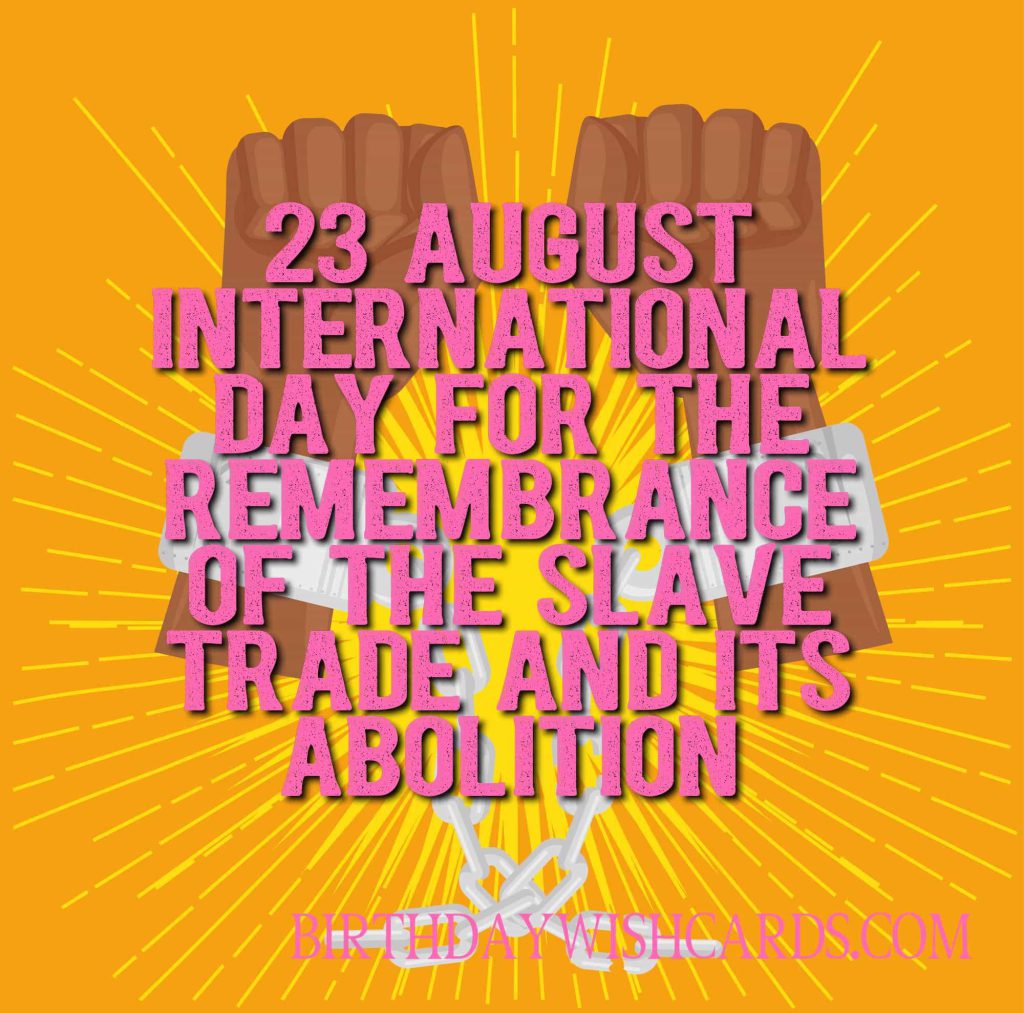
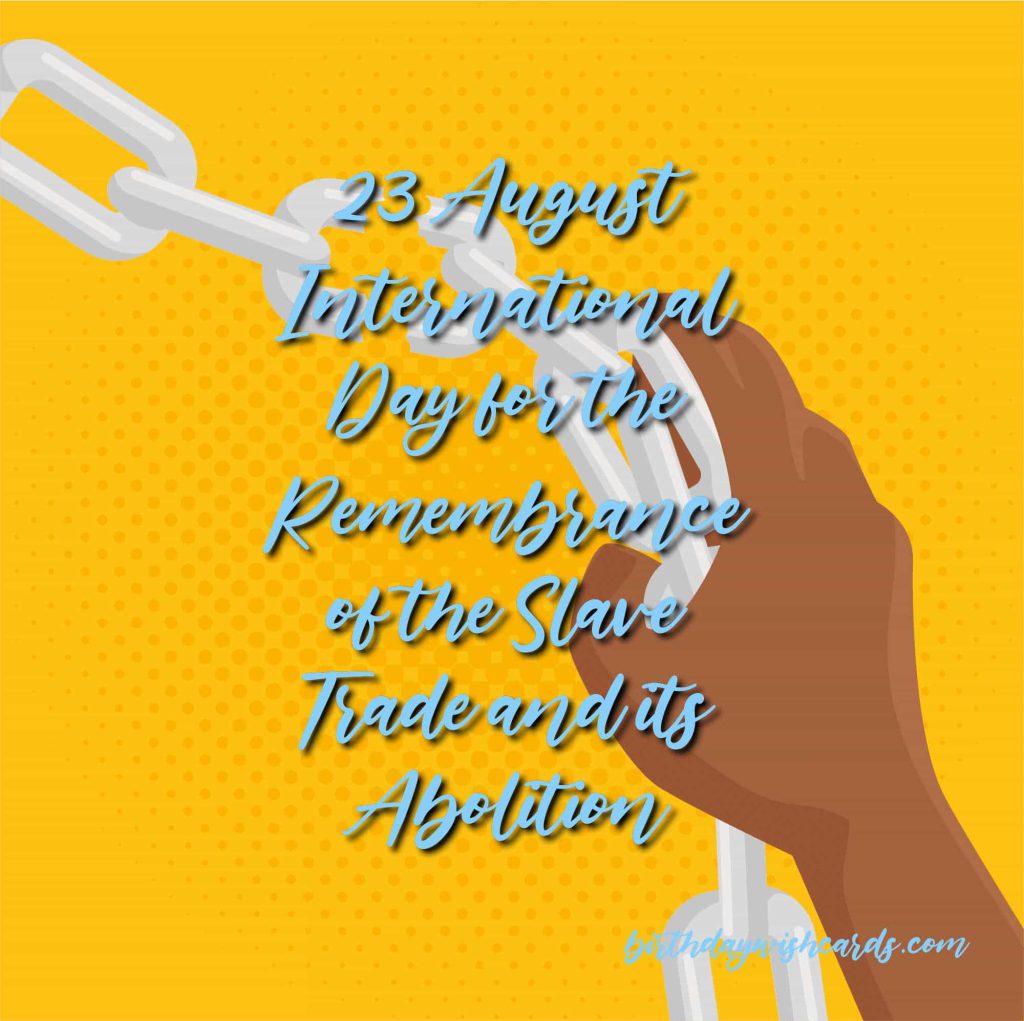
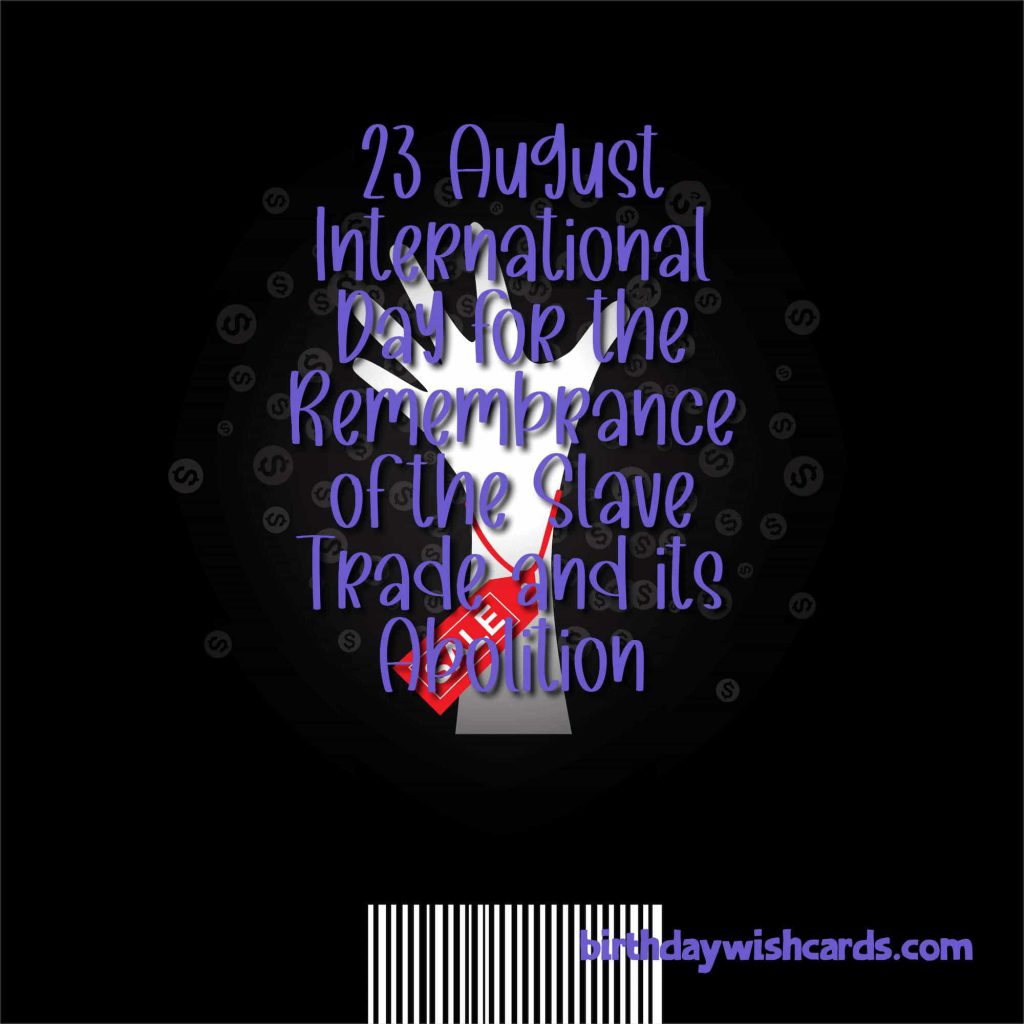
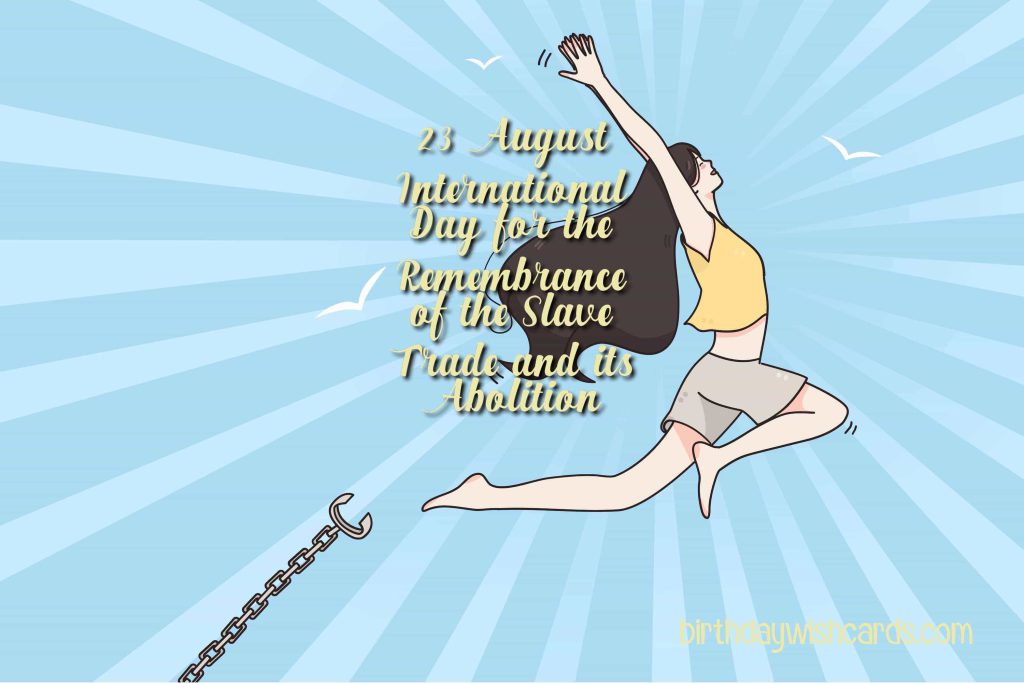
Historical Significance and Legacy
The transatlantic slave trade stands as one of history’s greatest human tragedies, forcibly uprooting millions of Africans from their homelands and subjecting them to unimaginable suffering. Spanning more than four centuries, it reshaped societies across continents and profoundly influenced the modern world.
The International Day for the Remembrance of the Slave Trade and its Abolition not only commemorates the victims but also serves as a platform to educate future generations about the consequences of racism, discrimination, and human exploitation. It is a call to acknowledge past injustices and to work together for a more just and humane future.
Role of Education and Culture in Remembrance
Education is vital in preserving the memory and understanding of the slave trade. Schools, universities, museums, and cultural centers are encouraged to develop programs that explore the historical context, economic systems, and personal stories connected to slavery.
Art, music, literature, and theater also play powerful roles in keeping this memory alive, allowing people to connect emotionally and intellectually with the experiences of enslaved individuals and their descendants.
By engaging diverse audiences—especially young people—these educational and cultural initiatives foster empathy, tolerance, and a commitment to human rights.
Global Impact and Ongoing Challenges
While the abolition of




